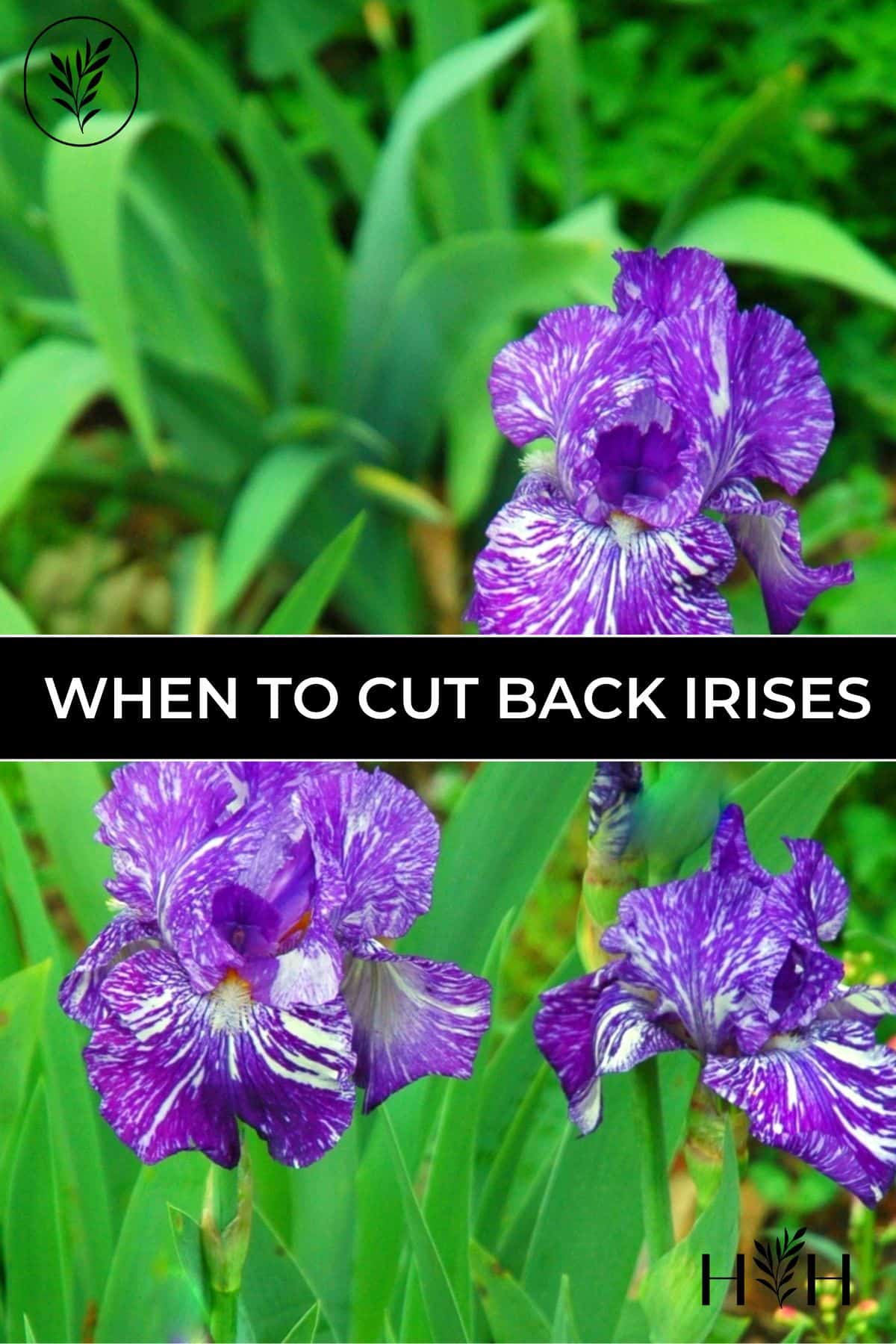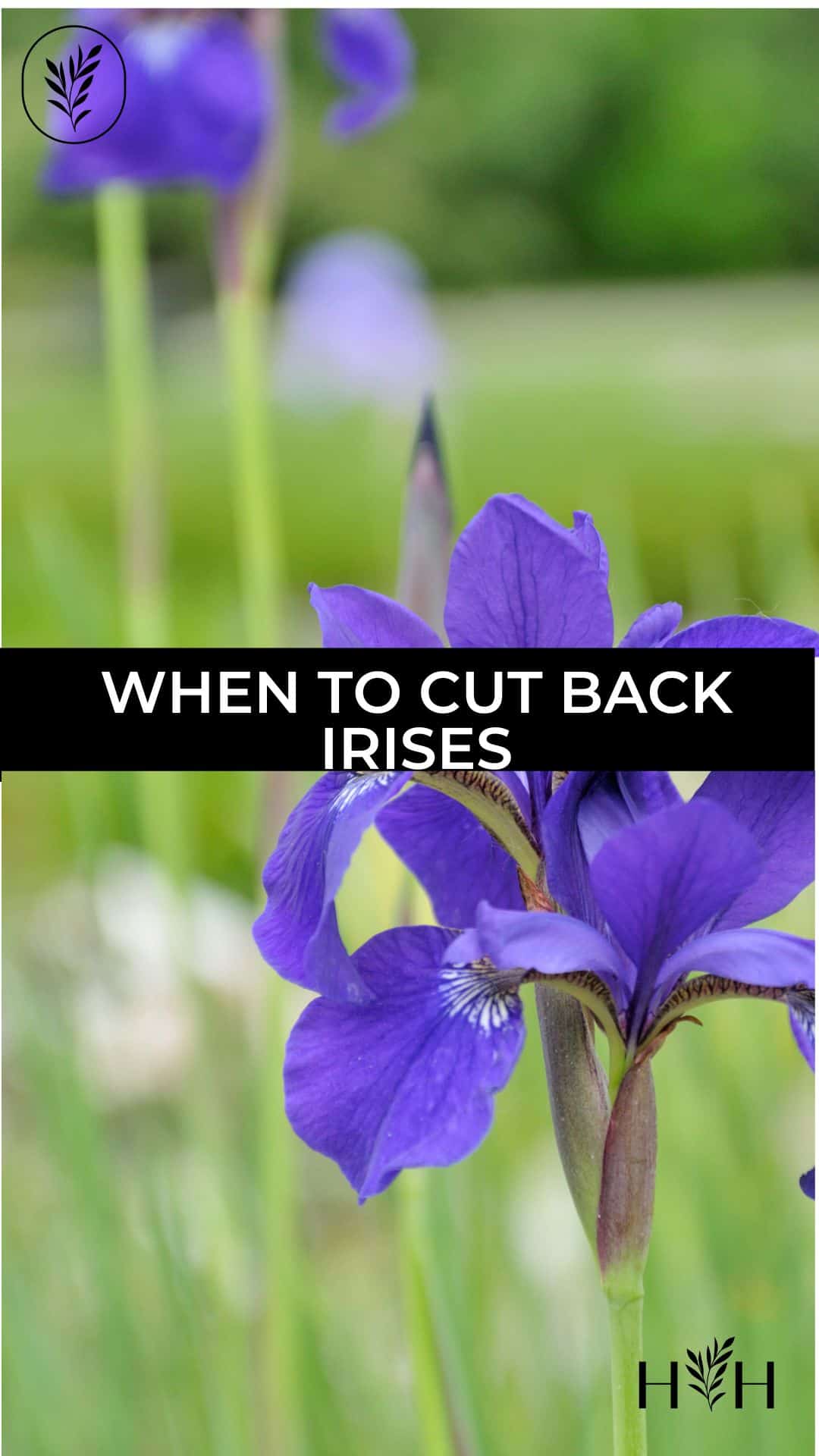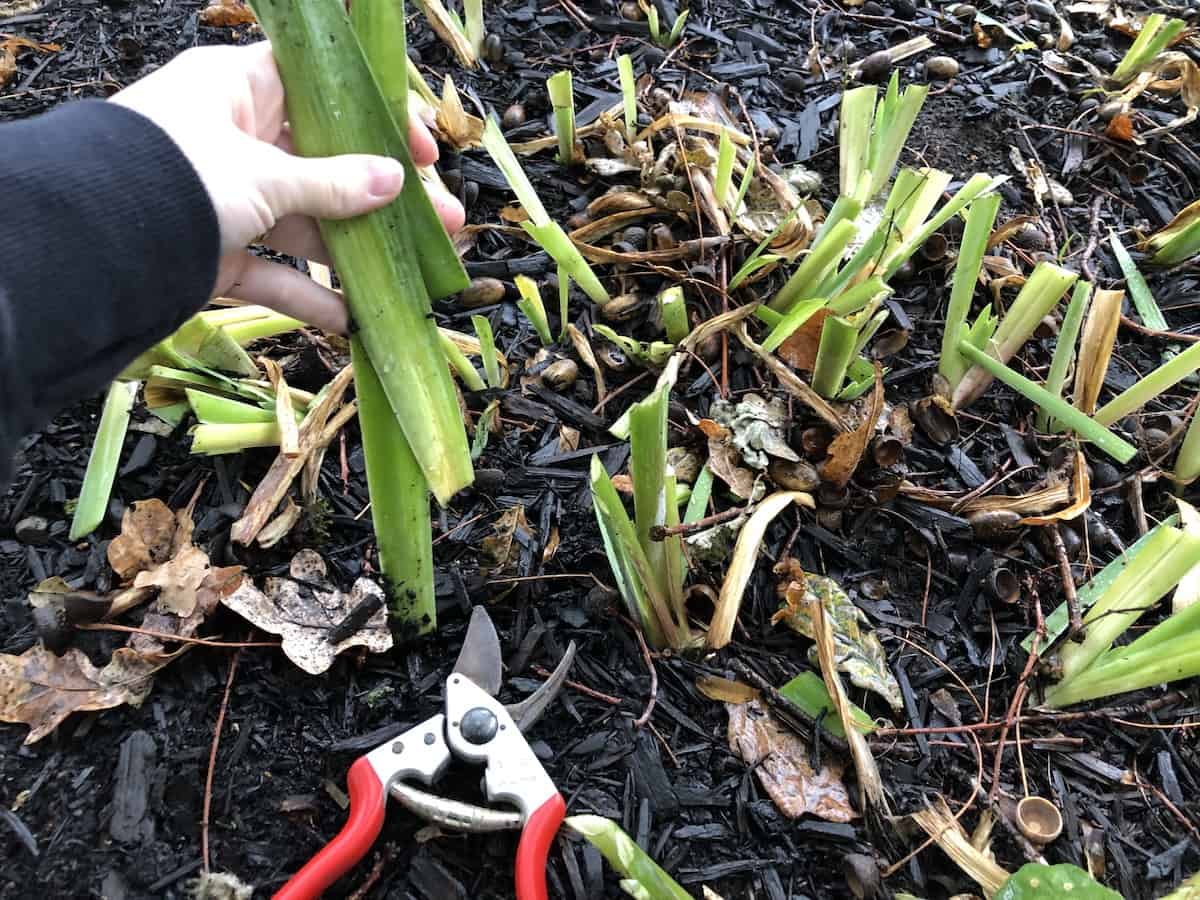
When to cut back irises 🌸 ️ Uncover the timing for healthier blooms
In general, cut the greenery back six to eight weeks after your blossoms die back. Although the foliage appears unsightly, it is slowly gathering energy to be stored for next season's flowering. Rhizomes, or underground stems, store photosynthesized energy from the dying foliage.

Simple Ways to Cut Back Irises in the Fall 14 Steps
Why is knowing when to cut back irises important? There are three primary reasons to trim back irises: While bearded irises put on quite the show for two to three weeks every spring, once their blooms fade, the plants look a lot less attractive. You'll want to trim off the spent flowers to keep the garden looking its best.

When to cut back irises 🌸 ️ Uncover the timing for healthier blooms
'You should begin cutting irises back after flowering and the blooms have all begun to fade. The remainder of the plant's foliage should be left until the first signs of frost, however.' Deadheading irises throughout the blooming season in spring and summer should be avoided, unlike deadheading pansies, as these plants only bloom once.

When and How to Cut Back Irises in the Fall Prune Iris Trim Iris
1 Remove broken or diseased leaves right away. Keep an eye on your iris plants even after they stop blooming. Look for leaves that are visibly broken, along with leaves that show signs of disease. [1] Take a pair of bypass pruners and clip these leaves down so they only stick 2 in (5.1 cm) out of the ground. [2]

When to Cut Back Irises for Healthier, More Attractive Plants
Cut the foliage back to one-third its height before digging up the roots six weeks after the last flowering cycle. You can cut the rhizomes into 3- to 6-inch pieces that contain both leaves and roots, then replant them 10 inches apart so the top of the rhizome is just beneath the soil surface.

When do you cut back irises? Expert tips for the best blooms
There are three important times and reasons to cut back your iris plants. Learn why proper pruning is key to growing these perennials successfully and the be.

Simple Ways to Cut Back Irises in the Fall 14 Steps
When To Cut Back Irises? The best time to cut irises is in the fall each year. The buds have opened, and the foliage will die back mid to late fall. Likewise, you can remove some stalks during the spring when the bloom period has ended. Do not cut the foliage during summer because it can maintain by itself.

When To Cut Back Irises
0:00 / 4:38 When to cut back your Iris plants is a quick look at ting and how to. German Iris ate one of the easiest and most beautiful perennial garden plants you can g.

Simple Ways to Cut Back Irises in the Fall 14 Steps
Take well sharp scissors (the stems can be quite woody and hard) and make a cut about 2.5 cm from the rhizome. You can add some compost for a second flowering even more abundant. 4.2 Cutting back iris after bloom (in fall) for winter. After the flowering period, the plant begins to prepare for winter.

Simple Ways to Cut Back Irises in the Fall 14 Steps
The best time to cut back irises is in late summer or early fall, after they have finished blooming for the season. By trimming the plants back at this time, you allow the foliage to store energy for next year's growth and flowering. To cut back irises, start by removing any dead or diseased foliage.

When to cut back irises 🌸 ️ Uncover the timing for healthier blooms
The correct time to deadhead irises is to remove flower heads a few days after they have faded. Tony O'Neill, an experienced gardener and author, says that deadheading can 'greatly benefit' your irises and outlines a four-point guide for how to deadhead irises. It is essential to use clean and sharp pruning shears or scissors when deadheading.

When To Cut Back Irises
'Cutting back irises is an essential part of garden maintenance, as not only will it keep your garden looking neat and tidy, but it also will help maintain the health of your plant,' reveals Andrew White from Rhino Greenhouses Direct.

Simple Ways to Cut Back Irises in the Fall 14 Steps
Here are some bonus tips. Trim the irises before transplanting, leaving only 6 to 9 inches of foliage. This way, the newly transplanted plant's roots will settle quicker as they don't have to carry an entire plant. Keep the rhizome slightly above the soil. It benefits from the sun and needs air to keep it dry.

When To Cut Back Irises
Iris plants are best cut back in the fall. Spent flower stalks can be removed in spring after the plants finish blooming, but the foliage should be left standing through summertime. In mid-autumn, cut the leaves back to about 3″ long above the soil line ( here's a video showing how ).

When To Cut Back Irises?
1. Split the irises every year, after flowering has ended during June. At this point the early summer leaves and flower stems have started to die back, and the late summer leaves have started to grow. 2. Split individual plants by cleaving the rhizomes with a spade, leaving the part to be retained undisturbed in the soil.

Cutting back Irises Growing tips for healthy, attractive plants
Step 1 Cut back the leaves and stems on your iris plants using a sharp knife or garden shears once some leaves turn yellow and droop. Leave green growth intact as your plants need this for survival. The best times for this are after the first frost in September or October. Step 2